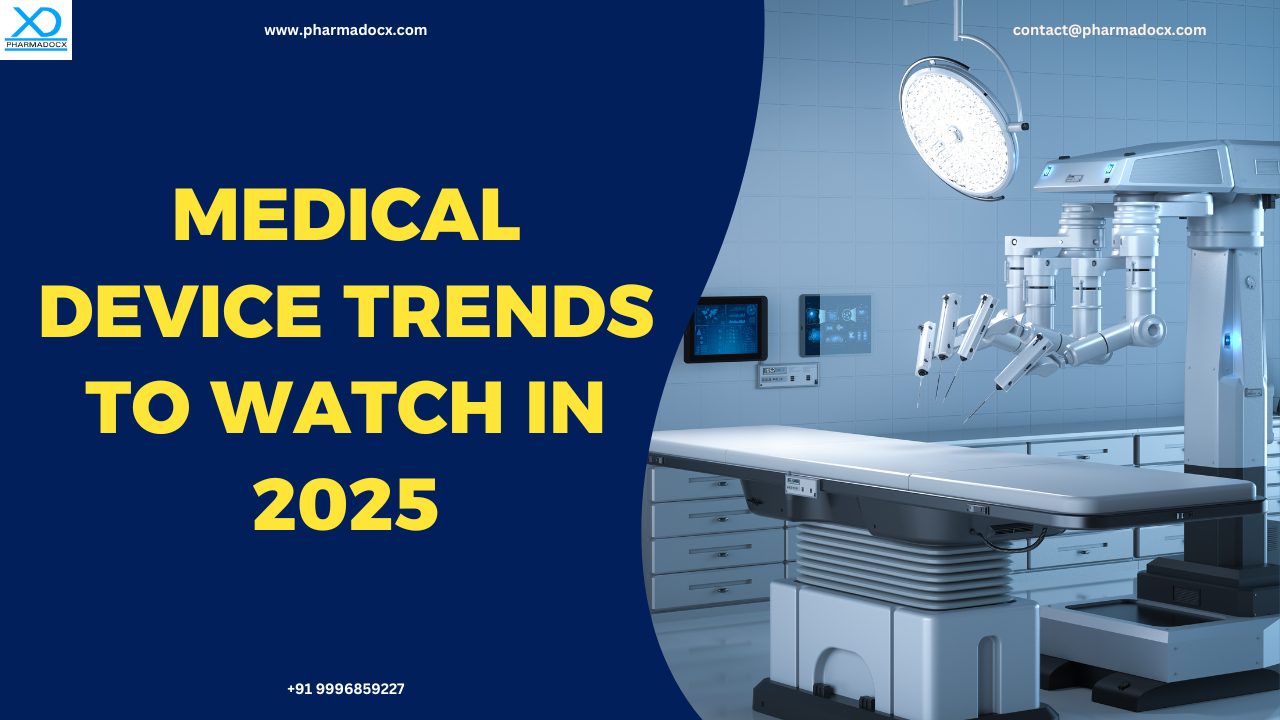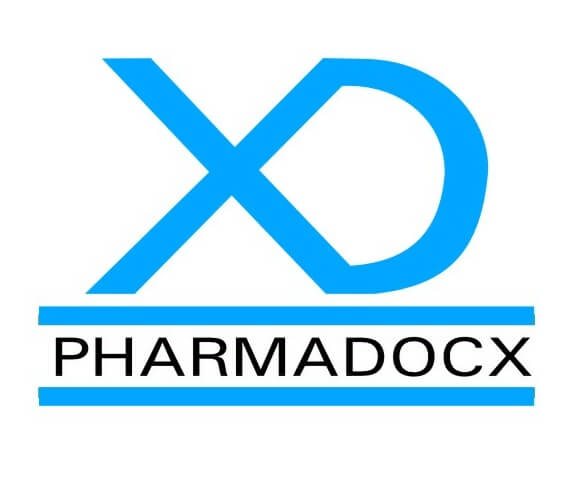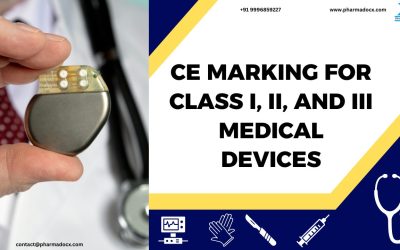The medical device industry is poised for significant growth and transformation. As we move into the second leg of the year 2025, we have highlighted some medical device trends to watch. By embracing these new trends, the medical device industry can continue to improve patient care, operational efficiency, and innovation. This will revolutionise the healthcare system for a better future.
Why is 2025 a pivotal year for the medical device industry?
In the year 2025, the medical device industry is witnessing advancements in AI, wearable devices, 3D printing, and medical robotics. Additionally, it is also experiencing constant regulatory changes. Manufacturers must stay agile and adapt to the latest medical device trends to maintain a competitive edge. We have highlighted why 2025 is a pivotal year for the medical device industry.
- Technological advancements: Firstly, AI is being integrated into a wider range of medical devices to improve accuracy, efficiency, and patient outcomes. AI can analyze large datasets and automate processes. This will lead to faster diagnoses, more precise treatments, and personalized care plans. Secondly, the need for continuous patient monitoring is driving demand for advanced wearables that can track various vital signs and health metrics. These devices will help with early detection and remote management of chronic conditions. Thirdly, robotics is transforming surgical procedures. Hence, the surgical robotics market is booming. Finally, 3D printing technology is enabling the creation of personalized medical devices. These tailored devices are catering to patient needs and improving comfort.
- Shifting healthcare models: The medical device industry is moving towards a model that emphasizes patient-centric care. This translates to a demand for devices that are not only technologically advanced but also address the specific needs of the patients.
- Focus on sustainability: In the medical device manufacturing industry, sustainability is being given considerable emphasis. The focus of this industry is shifting to eco-friendly materials, energy-efficient manufacturing processes, and waste reduction strategies. Furthermore, investors are increasingly prioritizing sustainability. Hence, funding is being funnelled towards medical device companies committed to environmentally conscious practices.
- Supply chain disruptions and costs: Supply chain disruptions are impacting the medical device trends. Increasing supply chain costs and potential disruptions due to geopolitical factors are forcing companies to find resilient and efficient supply chain and manufacturing strategies.
- Economic shifts: Despite economic uncertainties, the medical device industry is witnessing considerable investments. Hence, the investors have confidence in the growth potential of the medical device industry. Furthermore, new pricing models have evolved in the medical device industry. One such model is subscription-based pricing. It offers improved flexibility and accessibility, thereby potentially driving easy adoption of innovative medical technologies.
- Evolving regulatory landscape: The medical device industry regulatory landscape is constantly evolving. It is being continuously updated to ensure patient safety and improved healthcare delivery. The regulations continue to evolve with new requirements for manufacturers, focused on enhanced safety and performance standards. Moreover, regulations for AI-enabled medical devices are being updated to balance innovation with safety. Furthermore, with the increase in connectivity of medical devices as well as use of software, regulations have to focus on robust cybersecurity measures. These are required to protect sensitive patient data and prevent attacks.
Top medical device trends in 2025
- Medical robotics in surgical and non-surgical applications: Robotic surgical systems are enhancing precision, minimizing invasiveness, and shortening recovery times. Hence, robotic-assisted surgeries continue to gain traction. Medical device companies are innovating rapidly and offering specialized solutions. Robotic surgical systems are improving precision and reducing recovery times of surgeries performed in the field of urology, gynecology, and cardiology. Additionally, medical robotics are performing an increasing number of non-surgical tasks. For example, medical robotics is being used to automate surgical tray preparations.
- Brain-computer interfaces: Brain-computer interfaces are one of the most important medical device trends to watch in 2025. In 2025, early-stage human trials have shown promising results for AI-powered brain-computer interfaces. These will help patients with neurological disorders, such as Parkinson’s, Alzheimer’s, as well as spinal cord injuries to regain motor function and communication abilities. Furthermore, brain-computer interface-powered exoskeletons are an important medical device invention to watch out for. Brain-controlled wheelchairs and neurorehabilitation platforms are leading the way in personalized healthcare delivery.
- Artificial intelligence (AI) and machine learning: Artificial intelligence (AI) and machine learning are revolutionizing the medical device industry. AI helps in disease identification, optimization of therapies, and diagnostic support applications. They are enabling predictive analytics and data analysis. Additionally, they are automating various tasks within the device and the manufacturing process.
- Clinical wearables: By offering personalized and preventative healthcare, wearables are in high demand. Additionally, they cater to the increasing demand for continuous monitoring of vital signs and health metrics. This empowers patients to actively engage in their health management, thereby reduce hospitalization rates. Moreover, these devices enable continuous monitoring of chronic conditions, such as diabetes, hypertension, and cardiac disorders. Thus, clinical wearables, such as smartwatches, fitness trackers, and specialized biosensors, are in high demand.
- Minimally invasive devices: Minimally invasive techniques and devices have considerably advanced. With advantages of smaller incisions, less blood loss, faster recovery times, and reduced healthcare costs, minimally invasive devices are in high demand. Sensors incorporated into these devices can provide real-time feedback to surgeons. This further enhances precision and patient safety. Hence, minimally invasive devices have made it to the top medical device trends.
- 3D printing for customised medical devices: 3D printing is used to create customized implants, prosthetics, and medical devices. Bioprinting is used for tissues, including skin grafts and cartilage. These technologies enable the development of patient-specific devices tailored to individual anatomy and needs. This leads to improved efficiency, functionality, healthcare delivery, and comfort.
- Automation in healthcare workflows: Hospitals and diagnostic centers are increasingly turning to automation tools to reduce the burden on healthcare workers. From robotic process automation to smart diagnostics, streamlined, integrated, and automated solutions are shaping modern healthcare delivery.
- Medical waste management: With increasing use of medical devices, sustainable practices in manufacturing and responsible waste management are becoming crucial in 2025. Hence eco-friendly materials should be used for constructing medical devices. Additionally, waste generation should be reduced. Moreover, options for recycling and reprocessing devices should be put to use.
- Remote patient monitoring: Telemedicine, hospital-at-home models, and connected health platforms are on the rise. Hence, medical device manufacturers are developing medical devices integrated with remote monitoring features with cloud-based data analytics. Devices that offer real-time alerts, patient dashboards, and predictive analytics will be in demand in 2025 and beyond.
- Immersive technology: Virtual reality (VR) and augmented reality (AR) are being increasingly used for medical training and surgical planning. Hence, immersive technology has made to the top 2025 medical device trends to keep a tab on.
- Internet of Medical Things (IoMT): Internet of Medical Things (IoMT) is a trending concept in the medical device industry. The IoMT connects various medical devices and systems. It facilitates the collection, transmission, and analysis of real time health data. Thus, it allows for remote patient monitoring and to track patient movements and vital signs. IoMT improves diagnosis and leads to cost-effective care delivery.
Pharmadocx Consultants: Your trusted regulatory ally
In this blog, we have summarised some medical device trends to watch in 2025. Regulatory guidelines for the medical device industry are constantly being updated to keep up with the trends. These changes are necessary for improved healthcare delivery and patient safety. As medical device manufacturers and importers, it is not possible to stay abreast of the latest regulatory guidelines. We at Pharmadocx Consultants are going to guide you in every step your regulatory journey. Email at [email protected] or call/Whatsapp on 9996859227 to let us help you.





